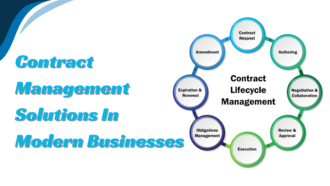7 Effective Strategies to Manage Attrition in Professional Services Firms
- 1 7 Best Strategies to Manage Attrition
- 1.1 The adverse impact of attrition on professional service firms
- 1.2 Ways to minimize unplanned attrition in PSO
- 1.2.1 Develop a robust retention strategy for new recruits
- 1.2.2 Implement performance-linked variable pay
- 1.2.3 Allocate work based on competencies and interests
- 1.2.4 Administer IDP for consultants’ professional growth
- 1.2.5 Provide stretch assignments to consultants periodically
- 1.2.6 Consider senior consultants for strategic roles
- 1.2.7 Formulate a 360-degree feedback mechanism
- 1.3 How can advanced resource management software help manage attrition`?
- 1.3.1 Here’s how it works:
- 2 Conclusion
“According to a LinkedIn report, the employee attrition rate in the professional services industry stood at 13.4%, one of the highest among all industries.”
Employee attrition has been a major challenge for the professional service industry, reaching an all-time in 2022. Furthermore, a paradigm shift in workplace culture and growing market volatility have made managing employee churn in PSOs even harder.
Both voluntary and involuntary attrition can have a devastating effect on PS firms if not addressed appropriately. It can disrupt organizational workflow, leading to loss of business opportunities and revenue loss. Therefore, effectively managing attrition is essential for the profitability and growth of PSOs.
7 Best Strategies to Manage Attrition
This blog discusses the best strategies to reduce unplanned attrition in PS firms and how SAVIOM’s advanced resource management solutions can help address this issue.
The adverse impact of attrition on professional service firms
The primary causes behind unplanned attrition include low employee engagement, burnout, lack of career growth opportunities, incompetent pay packages, and inefficient leadership. Failure to address these factors leads to loss of talent, adversely impacting the sustainability of PS firms.
Moreover, when seasoned consultants leave the PS firm suddenly, they take away their tacit knowledge, leaving behind an intellectual hole. Furthermore, unplanned attrition leads to last-minute firefighting, resulting in project delays and substandard quality of deliverables.
Another repercussion of attrition is that it adversely affects team dynamics. Whenever any consultant leaves, the tasks dependent on them may get delayed, and, as a result, it may hamper the team’s productivity. It may also lead to an increased workload for the remaining team members, leading to exhaustion and burnout.
Now that we understand the adverse effects of unplanned attrition on PS organizations let’s look into ways to minimize it.
Ways to minimize unplanned attrition in PSO
By minimizing unplanned attrition and retaining top talent, PS firms can achieve their organizational goals and tackle unpredictable market conditions. Enlisted below are the best strategies for PSOs to reduce unplanned attrition.
Develop a robust retention strategy for new recruits
“According to a survey, organizations with engaging onboarding processes retained 91% of their new hires through their first year.”
Since the PS industry faces significant attrition among junior and intermediate-level associates, the survey highlighted the importance of creating a robust onboarding experience to retain talent. Managers should familiarize the new hires with the organizational structure and introduce them to senior and junior team members.
They should be given an in-depth tour of their daily duties, standard operating procedures, and performance metrics. Managers can go the extra mile and assign mentors to the new recruits to expedite their induction into the team. For example, a junior financial analyst can shadow the senior financial advisor to understand the nuances of the job. Learning experiences like this can positively impact new employees, improving their engagement and preventing churn.
Implement performance-linked variable pay
“According to a study, compensation and benefits remain the strongest motivators for employees to choose an employer.”
Compensation is a crucial factor in employee turnover as it influences whether consultants stay with the PS firm or move on to a competitor. Further, appropriate compensation creates a value proposition for the consultants, motivating them to become more productive. Therefore, PSOs must provide competitive pay packages that match the market standard to retain top talents.
Furthermore, they must consider performance-based variable pay to reward high-performing consultants and create healthy workplace competition. For example, if a business advisor has succeeded in extending the client’s contract through their excellent performance, they should be renumerated with a bonus. In addition, incentivizing employees shows that the company values their effort and encourages them to stay longer, thereby reducing attrition.
Allocate work based on competencies and interests
Assigning the right people to the right project or task is critical to retain competent professionals. That’s because deploying niche skilled or senior consultants to low-priority, mundane work can make them feel undervalued, demotivated, and disengaged. On the hand, allocating under-qualified associates to skill-intensive tasks can result in them feeling overwhelmed and burnout.
If there is persistent misalignment between work allocation and the employees’ competencies, it may eventually lead to the departure of talented consultants. Therefore, consulting supervisors must regularly assess the employee’s qualifications, competencies, experience, interests, and availability before allocating them to projects. This can minimize the risk of disengagement, burnout, and turnover significantly.
Administer IDP for consultants’ professional growth
One of the primary reasons for skilled professionals to leave an organization is the lack of appropriate career growth opportunities. Therefore, PS firms must invest in IDP (Individual Development Program) to enhance employees’ professional and personal development.
“According to a study, 94% of those surveyed said they would stay at a company longer if that company demonstrated a commitment to helping them learn.”
As a result, developing a culture of continuous learning through suitable L&D and training initiatives allows consultants to build new skills and upgrade their industry knowledge. Furthermore, personalized training guarantees higher motivation, participation, and engagement levels, curbing the risk of unplanned attrition.
Provide stretch assignments to consultants periodically
It’s a common practice in the PS industry to give stretch assignments as part of on-the-job development. Stretch assignments are designed to test and upskill the knowledge and capabilities of the service personnel. Providing these assignments to junior and intermediate-level consultants gives them an opportunity to learn new things and grow professionally.
For example, the manager can allocate fresh PHP developers to learn a new programming language as part of their assignment. This exercise will diversify the resources’ skill set and help managers deploy them to more advanced projects in the future. In addition, by challenging the developers, the PS firm can keep them engaged and prevent turnover.
Consider senior consultants for strategic roles
Given their vast experience, senior consultants accumulate relevant institutional knowledge throughout their careers. They always look for opportunities to expand their job profiles and showcase their expertise. Therefore, by considering senior practitioners for strategic roles, PS firms can make them active participants in the decision-making process, enhancing their engagement and motivation and reducing attrition.
For example, the business operations manager can begin mentoring the new recruits. They can use this opportunity to identify candidates with relevant skill sets and experience to fill high-level roles. Their recommendations can help the management shortlist suitable resources for succession planning. Therefore, enabling senior consultants to contribute to larger organizational goals can enhance their job contentment and reduce attrition.
Formulate a 360-degree feedback mechanism
Establishing a real-time feedback cycle is important because it allows service professionals to understand their strengths and areas of improvement. In addition, a 360-degree feedback mechanism can open the doors to two-way communication that eliminates biases and facilitates quick redressal of grievances.
Moreover, it provides a platform to give due recognition to hardworking consultants. It can also enhance transparency and foster trust, thereby improving job satisfaction. As a result, a consultant would be less likely to leave the organization.
Now let’s understand how robust resource management software can help PS firms manage attrition.
How can advanced resource management software help manage attrition`?
Advanced resource management software like SAVIOM can provide a comprehensive overview of the consultant pool, enabling PS firms to formulate effective retention strategies to minimize attrition.
Here’s how it works:
- The tool’s 360-degree resource visibility and advanced filters enable consulting managers to ensure competent allocation based on consultants’ schedules, proficiency, and interests.
- The competency matrix allows supervisors to identify candidates who can be considered for stretch assignments. Furthermore, it helps PS firms to facilitate training, IDP, and succession planning.
- Real-time business intelligence dashboards, analytics, and reports such as utilization heatmaps, forecast vs. actual, bench reports, etc., provide in-depth insights into crucial employee metrics. It enables managers to identify and course-correct over/underutilization, reducing burnout and unplanned attrition.
- The open seat feature empowers consultants to show interest in specific projects/tasks. Allowing employees to choose their work of interest can improve their engagement, enhance productivity, and lower attrition.
Conclusion
PS firms rely on the skills and expertise of their consultants to generate revenue. Therefore, protecting these valuable assets is critical for the company’s growth. Hence, PSOs must proactively implement the abovementioned strategies and robust resource management software to minimize unplanned attrition. This will help them maintain an advanced talent pool and future-proof their business against global competition.



















